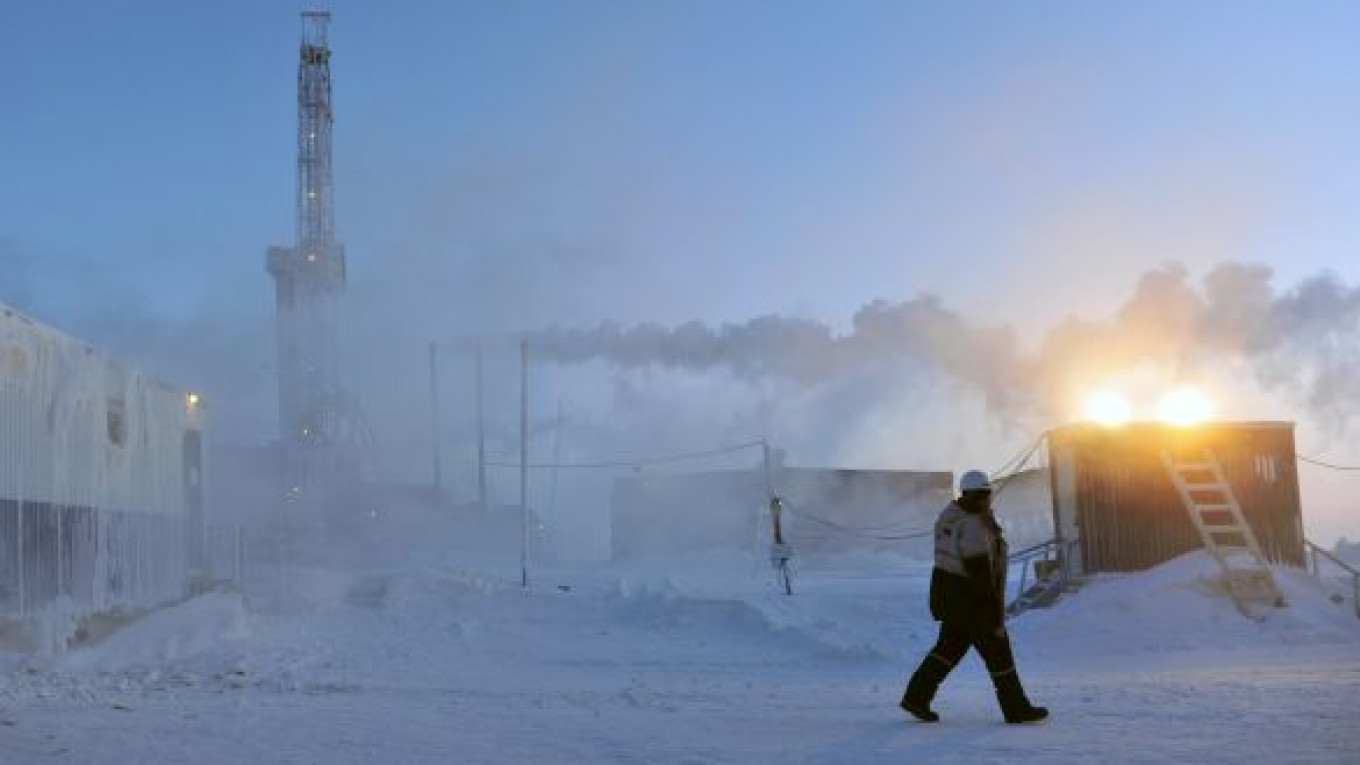Russia will at least keep its oil production at record-high levels this year thanks to strong performance at new fields but there is little chance of significant further gains in output, analysts and officials said.
Russia, the world's top oil producer, relies on oil export revenues to fill state coffers and keep its economy growing. Output rose 1.4 percent last year to a post-Soviet high of 10.51 million barrels per day thanks to greenfields launched a couple of years ago.
But the fields now ramping up production, such as Rosneft's Vankor deposit in Eastern Siberia, were discovered by Soviet geologists. Newer discoveries are years away from coming on stream and that will constrain growth potential.
And, although Russia is the world's second-largest oil exporter behind Saudi Arabia, its crude surplus is being squeezed by a massive round of refinery upgrades that will cut oil flows abroad.
The Energy Ministry predicts that domestic oil production will be at least unchanged this year, with so-called "old greenfields" such as Vankor or Surgutneftegas's Talakan fields helping offset declines at older brownfields.
Russia has three times more oil in the ground than the U.S., but it stands to lose its lead in production as soon as next year due to the U.S. shale energy revolution, the International Energy Agency predicts.
Reflecting the lack of dynamism, state oil firm Rosneft said it replaced 180 percent of its production in reserves last year. Yet Russia's largest oil producer plans annual output growth of only 1 percent in the years to come.
Alexander Kornilov, an analyst with Alfa Bank, expects output to add about 1 percent in 2014, thanks to growth at Rosneft's Vankor and Uvat fields, Talakan and LUKoil's Caspian Korchagin field.
Three large deposits launched last year, Trebs and Titov in West Siberia, Srednebotuobinskoe in Eastern Siberia and the Arctic Prirazlomnoye — all Soviet discoveries — are expected to add a total of about 16 million tons (300,000 bpd) to overall production towards the end of this decade.
First oil at all three deposits was delayed and peak production targets revised, making long-term forecasts now less reliable, analysts say. Still, they will support output.
"Rosneft plans to add about 1 percent to its output. Given that it is the country's largest oil company, Russia will also see moderate growth," said Andrei Polischuk at Raiffeisenbank.
Surgutneftegaz plans to keep its oil output stable at around 1.2 million bpd this year, the company told Reuters, while LUKoil and Gazprom Neft declined to comment.
Russia's next major Arctic field, Gazprom Neft's Novoportovskoye, is expected to pump its first oil this year at a rate of up to 10,000 bpd, rising sharply by 2020.
Other major new fields such as Yurubcheno-Tokhomskoye or Kyumbinskoe are expected to start operations later this decade.
West Siberian brownfields still account for about 90 percent of Russian output but are likely to start burning cash in just four years due to rising costs as deposits deplete, Renaissance Capital predicts.
"Dynamics at brownfields may be worse than expected given still-high taxation and a lack of stimulus to make full use of oil-recovery methods," said Denis Borisov, director at Ernst & Young's oil and gas center in Moscow.
The oil heartland of West Siberia may yet see a renaissance, as it is believed to be home to the world's biggest technically recoverable "tight" oil resources, the U.S. Energy Information Administration estimates.
To stem output declines, Russia has offered tax breaks to boost investment in new or remote fields, support production from depleted deposits and create incentives to tap hard-to-recover reserves of tight oil.
Energy Minister Alexander Novak told Reuters last month that breaks should help Russia keep production at a minimum of 10.1 million to 10.2 million bpd in coming years and could lead to an increase to 10.8 million to 11.0 million bpd before 2030.
In its annual outlook, oil company BP said Russia and South America would join the U.S. in tapping shale oil over the next two decades, contributing about 1 million bpd of shale oil each by 2035.
"We think that share of tight oil will significantly increase in overall production but the effect will be seen after five years," Raiffeisenbank's Polischuk said.
A Message from The Moscow Times:
Dear readers,
We are facing unprecedented challenges. Russia's Prosecutor General's Office has designated The Moscow Times as an "undesirable" organization, criminalizing our work and putting our staff at risk of prosecution. This follows our earlier unjust labeling as a "foreign agent."
These actions are direct attempts to silence independent journalism in Russia. The authorities claim our work "discredits the decisions of the Russian leadership." We see things differently: we strive to provide accurate, unbiased reporting on Russia.
We, the journalists of The Moscow Times, refuse to be silenced. But to continue our work, we need your help.
Your support, no matter how small, makes a world of difference. If you can, please support us monthly starting from just $2. It's quick to set up, and every contribution makes a significant impact.
By supporting The Moscow Times, you're defending open, independent journalism in the face of repression. Thank you for standing with us.
Remind me later.






